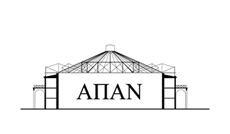Σακελλαρίου (επιστ. επιμ.), Ήπειρος, 4000 χρόνια (1997)
[Bibliography]
Λ. Βρανούσης, Ελευθερία Ι. Νικολαΐδου, Ευγενία Χαλκιά, Ε. Χρυσός, et al, Ήπειρος, 4000 χρόνια ελληνικής ιστορίας και πολιτισμού Μιχάλης Β. Σακελλαρίου (γενική εποπτεία.), (Εκδοτική Αθηνών, Αθήνα 1997)
See the English translation of this volume: M. V. Sakellariou (ed.), Epirus: 4000 years of Greek history and civilization (Ekdotike Athenon, Athens 1997) total pages 480.
“This volume opens with a description of the geography of the region in question [i.e. NW Greece and a great part of S Albania], accompanied by an account of the Prehistoric period. The following major parts are devoted to Antiquity, the Byzantine period, and modern times. The book has two original features: it covers the history of Epirus from early times to the present day for the first time in the international bibliography; and it deals not only with historical events, but also institutions, social, economic and intellectual life, and culture in general in each of chronological periods. The volume is completed by an overview of the present-day situation in the region. The texts are accompanied by a large number of illustrations of places and monuments, and original maps, charts and drawings. The volume unfolds for the reader a historical area in which a variety of cities and sanctuaries evolved in Antiquity, amongst them Dodona, Ambrakia and Nicopolis. The Greek character of Epirus is now also confirmed by the study of until recently inaccessible cities and monuments in present-day Albania, such as Bouthrotos [Butrint], Antigoneia and Phoinike. It also reveals that the Byzantine Empire developed a special identity in Epirus, culminating in the ‘Despotate’ of Epirus, which for a time united the larger part of mainland Greece and lay claim to the heritage of Byzantium. Finally, it gives an account of the course followed by Epirote Greeks during the five centuries of Turkish domination, and describes the influence and prestige of centres such as Ioannina and Moschopolis, and the struggle for survival and national liberation.”

